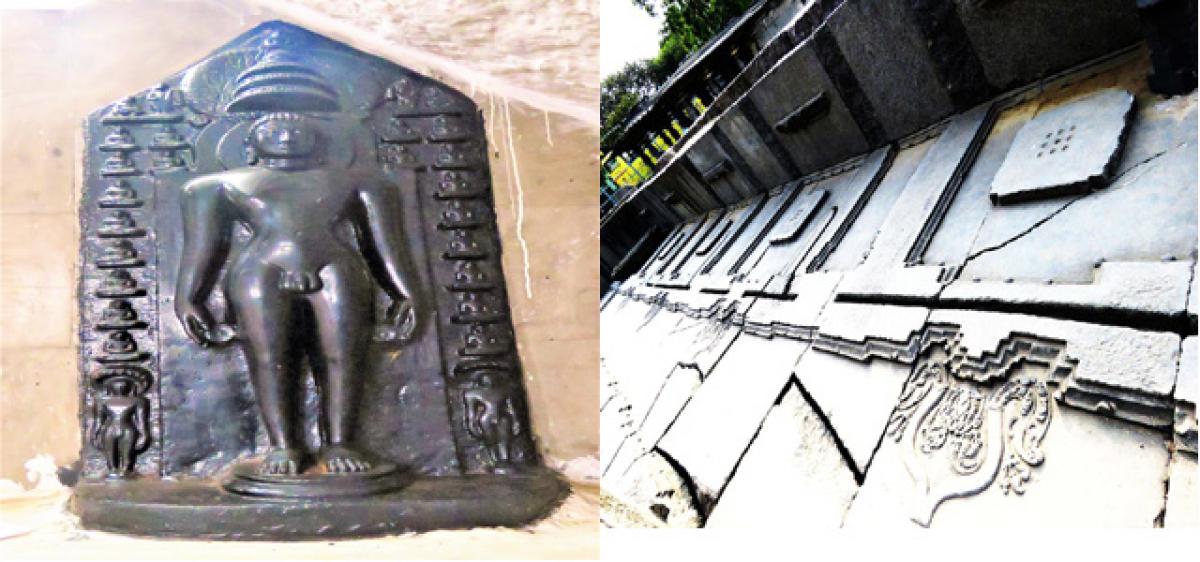Live
- Six scholars, including two women, win Infosys Prize 2024
- Gurukula zonal level sports meet concludes
- Vagdevi Jr College student selected for national basketball tourney
- Maoist area committee member arrested
- Collectorate staff protest attack on DC
- Villagers urge authorities to continue launch service even after construction of bridge
- MLA Padmavathi launches free lunch for readers
- Police high-handedness sparks outrage in Kodangal
- Khichi elected mayor of Delhi
- Sports enthusiasts encouraged to focus on achieving their goals
Just In

Hyderabad: Based on archaeological evidences, the member of the committee on Telangana History, Ramoju Haragopal and his team found out that Warangal and Hanamkonda were once thrived as seats of Jain learning.
Hyderabad: Based on archaeological evidences, the member of the committee on Telangana History, Ramoju Haragopal and his team found out that Warangal and Hanamkonda were once thrived as seats of Jain learning.
According to the Warangal Kaifiyat (local records), Jains of Vengi region migrated to Hanamkonda on account of attacks against them.
The Kakatiya Prola-II had patronised Jainism. The King had a minister Betana and his wife was Mylamma. In her name, a Jain temple was built atop Padmakshigutta, called as Kadalalaya Basadi.
The team found the images of Jain Gurus Parsvanatha, Vardhamana Mahaveera and an image which believed to be that of Padmavati at Padmakshi temple. They also found out stone images of Kubera and Chowisa (24) Teerthankara.
Outside the temple, there is a Jain inscription and on the western wall, there were Betana and Mylama images to the right of Mahavira’s image.
Among the idols figured at the place, there was an idol of a Jain guru, two pupils with a book stand or vyasa pitham, symbolising pustaka gachcha, between them.
The Jain Sangha was divided into ganas and they in turn sub-divided into gachchas.
Among the gachchas, Addakaligachcha, Nandigachcha, Meshapashanagachcha, Saraswatigachcha and Pustakagachcha were prominent in Telangana region.
According to popular opinion, Saraswatigachcha and Pustakagachcha are no two entities, but different names of a single gachcha. The stone-carved image of Pustakagachcha stands as a testimony to the fact that Hanamkonda once thrived as a great seat of learning.
Historians commented that wherever there are chovisa pillars featuring 24 Teerthankaras and such other images, the place should have thrived as a Jain seat of education.
Bodhan in Telangana state once thrived as a Jain university.
There is historical evidence to state that Warangal, besides Hanamkonda, once thrived as a seat of Jain learning.
Among the ruins of the historical Warangal fort we find amidst ruins a L-shaped dilapidated structures. It was popularly believed that the dilapidated structure once housed a pond meant for queens.
According to a different view, the ruins were once temples -- 22 rooms of the size 6 x 3 situated on a four-feet-high basement -- and each room has nine holes to fix an idol. Each room has eastern and northern entrances.
Behind each room, there is an outlet for free flow water used in the worship of the idols and a canal to transport the water to elsewhere.We find 24-teerthankara temples in Karnataka and North India.
Haragopal’s team members are: Vemuganti Muralikrishna, Aravind Arya, Chanti, Nagaraju and Hari Sanatkumar (historian) and Sadiq Ali.

© 2024 Hyderabad Media House Limited/The Hans India. All rights reserved. Powered by hocalwire.com







